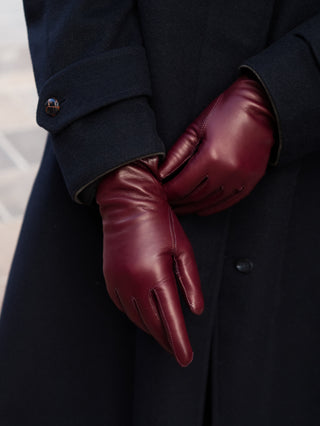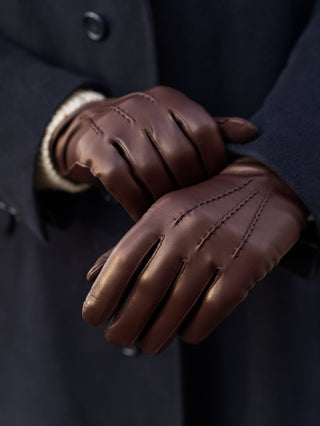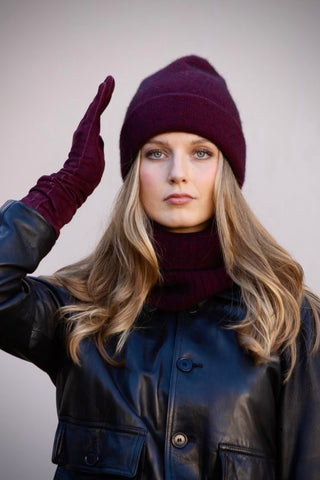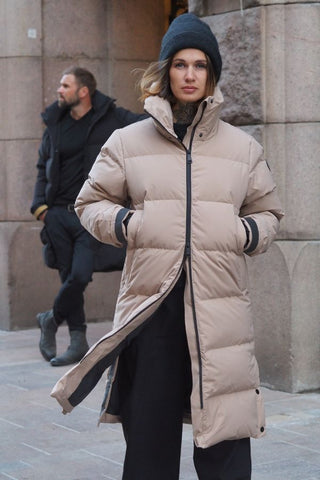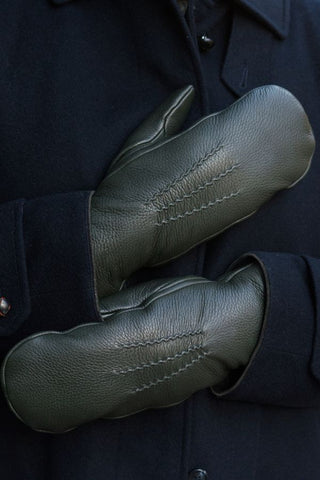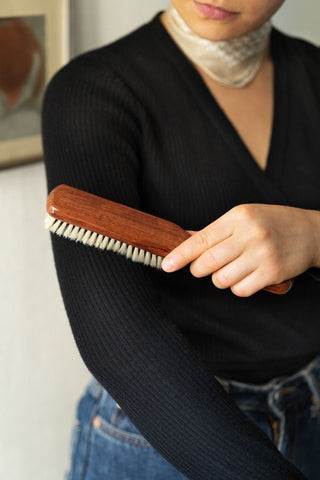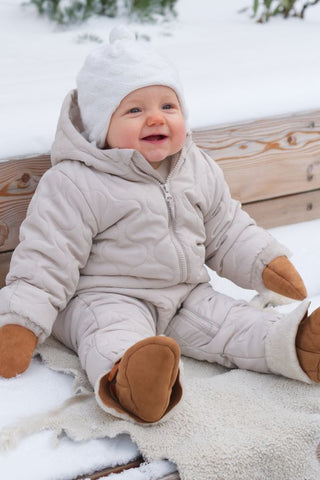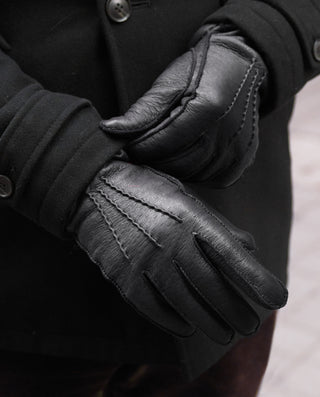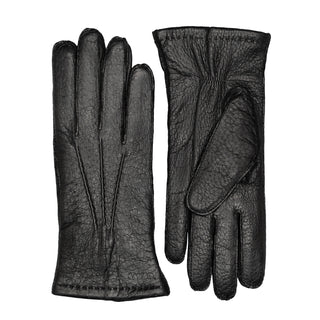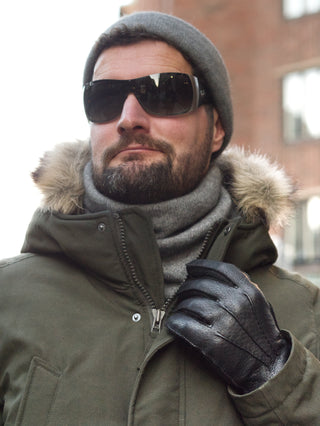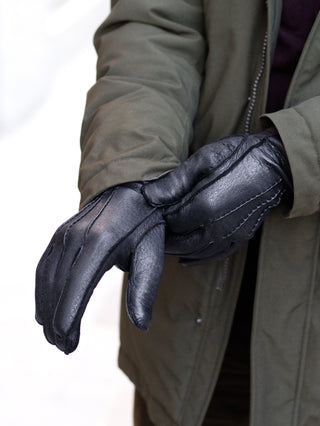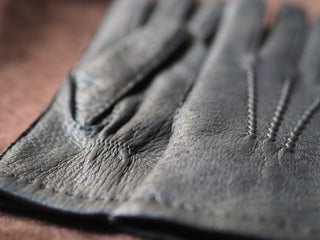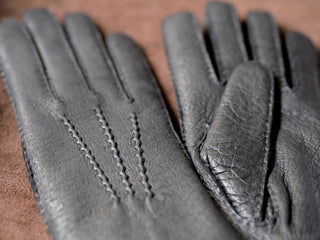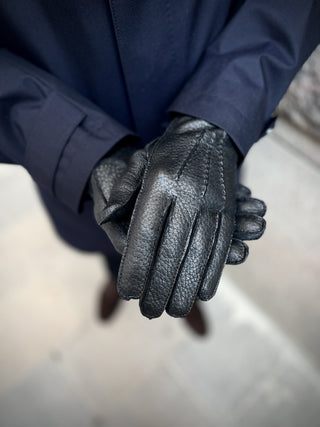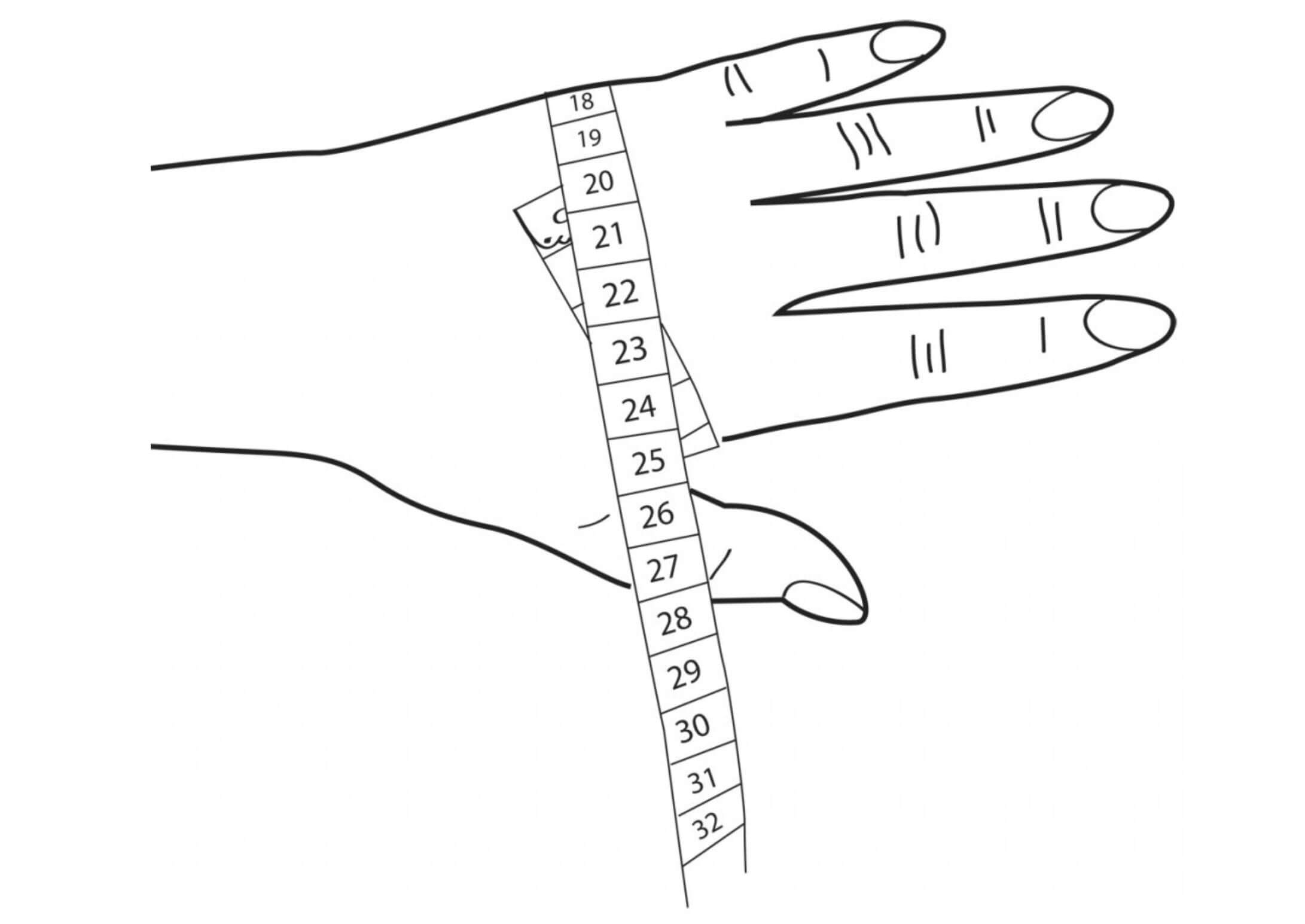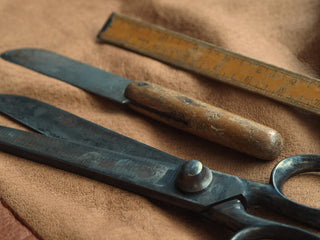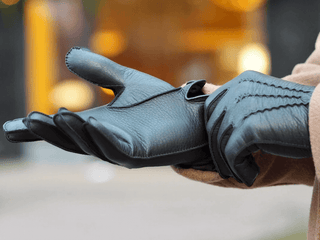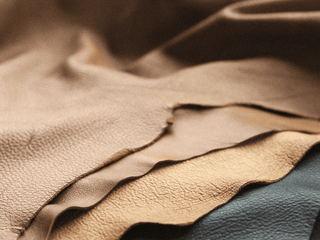Peccarykäsineet. Miesten mustat peccaryhanskat pitävät kädet lämpiminä kylmälläkin talvisäällä. Käsityönä valmistettu klassikkokäsine on käsineiden ja nahkojen aatelia. Villisian nahassa on omintakeinen pintastruktuuri. Raflaava nahkan luontainen kuvio tekee käsineistä erityiset.
-
- Peccary leather gloves
- Peccary wild boar leather (Finnish: pekari) Country of origin of the leather: Peru
- Knit lining 55% cashmere 45% wool. Lining made in Italy.
- Black wild boar leather gloves
- Made using the table cutting method
- European craftsmanship
The noble of gloves and leathers is the classic glove handcrafted from peccary wild boar. This is a glove that passes from generation to generation, from father to son.
This glove combines two wonderful luxury materials, peccary and cashmere wool. The excellent insulation of both materials makes these gloves great winter gloves that warm hands even in severe cold. The breathability of natural materials makes the gloves comfortable to wear throughout the winter.
Wild boar leather is velvety soft and durable. At its best, the gloves bring joy for years. The leather's porous structure makes it very warm. The beautiful texture of the leather combined with practical features makes it a unique and special material.
In addition to peccary leather being perfect for gloves, its value comes from its limited availability. Peccary leather comes from Peru, which is the only country allowed to sell this valuable leather. Indigenous communities living in the Amazon jungle hunt the animal for its meat. Hunting this CITES-protected animal is only allowed for survival. So the wild boar is not hunted for its leather; the leather is only a byproduct. Each pair is unique, as the hides of wild animals also show the life the animal has lived.
The traditional model has three decorative stitches on the back of the hand. The glove cuff is about 5 cm long, covering the wrist. Due to the thickness of the leather, the gloves are sewn with a reverse seam, meaning the seam is also on the outside. This makes the glove very pleasant to wear, as there are no seam allowances pressing against the fingers inside the glove. Sewing the gloves is very precise and time-consuming work. The sewer produces only about 2.5 pairs of gloves per day.
Over 100 steps of careful craftsmanship and high-quality materials make these gloves an excellent investment.
Gloves should initially fit very snugly so that they mold perfectly to the user's hand. The most important step in determining the fit of gloves is cutting the leather. Using a centuries-old table cutting method, the gloves achieve the right fit. Excess stretch is stretched out of the leather, leaving only the adaptation allowance that ensures excellent fit. This ensures that the gloves do not stretch even after long use, but retain their fit. Each leather is treated separately. The relatively small wild animal hides are very flawed, with many life marks and even holes. Cutting the leather is like a puzzle, as an experienced cutter looks for the right suitable spots on the leather for each part of the glove. Fortunately, the hides can be used carefully because the gloves have many small parts between the fingers.
The lining inside the glove is essentially a mitten inside the glove. These gloves have a lining made from a blend of sheep's wool and cashmere wool. This combines the best qualities of both materials. The knit is soft, breathable, and insulates heat well. Thanks to the wool, the lining is also slightly more durable than 100% cashmere. In use, the leather lasts longer than the knit lining, so to extend the lifespan, the lining can be replaced with a new one if necessary.
- Peccary leather gloves
- Peccary wild boar leather (Finnish: pekari) Country of origin of the leather: Peru
- Knit lining 55% cashmere 45% wool. Lining made in Italy.
- Black wild boar leather gloves
- Made using the table cutting method
- European craftsmanship
The noble of gloves and leathers is the classic glove handcrafted from peccary wild boar. This is a glove that passes from generation to generation, from father to son.
This glove combines two wonderful luxury materials, peccary and cashmere wool. The excellent insulation of both materials makes these gloves great winter gloves that warm hands even in severe cold. The breathability of natural materials makes the gloves comfortable to wear throughout the winter.
Wild boar leather is velvety soft and durable. At its best, the gloves bring joy for years. The leather's porous structure makes it very warm. The beautiful texture of the leather combined with practical features makes it a unique and special material.
In addition to peccary leather being perfect for gloves, its value comes from its limited availability. Peccary leather comes from Peru, which is the only country allowed to sell this valuable leather. Indigenous communities living in the Amazon jungle hunt the animal for its meat. Hunting this CITES-protected animal is only allowed for survival. So the wild boar is not hunted for its leather; the leather is only a byproduct. Each pair is unique, as the hides of wild animals also show the life the animal has lived.
The traditional model has three decorative stitches on the back of the hand. The glove cuff is about 5 cm long, covering the wrist. Due to the thickness of the leather, the gloves are sewn with a reverse seam, meaning the seam is also on the outside. This makes the glove very pleasant to wear, as there are no seam allowances pressing against the fingers inside the glove. Sewing the gloves is very precise and time-consuming work. The sewer produces only about 2.5 pairs of gloves per day.
Over 100 steps of careful craftsmanship and high-quality materials make these gloves an excellent investment.
Gloves should initially fit very snugly so that they mold perfectly to the user's hand. The most important step in determining the fit of gloves is cutting the leather. Using a centuries-old table cutting method, the gloves achieve the right fit. Excess stretch is stretched out of the leather, leaving only the adaptation allowance that ensures excellent fit. This ensures that the gloves do not stretch even after long use, but retain their fit. Each leather is treated separately. The relatively small wild animal hides are very flawed, with many life marks and even holes. Cutting the leather is like a puzzle, as an experienced cutter looks for the right suitable spots on the leather for each part of the glove. Fortunately, the hides can be used carefully because the gloves have many small parts between the fingers.
The lining inside the glove is essentially a mitten inside the glove. These gloves have a lining made from a blend of sheep's wool and cashmere wool. This combines the best qualities of both materials. The knit is soft, breathable, and insulates heat well. Thanks to the wool, the lining is also slightly more durable than 100% cashmere. In use, the leather lasts longer than the knit lining, so to extend the lifespan, the lining can be replaced with a new one if necessary.


